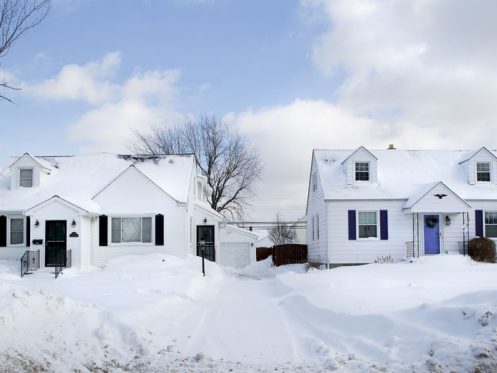If you haven’t started prepping your home for cold weather, now’s the time! Here’s a handy, winter-prep to-do list to help get you started.
Consider Upgrading Your AC/Heating System
Is Your AC/Heating system 10 years or older? Has it recently been showing its age through breakdowns and/or numerous service calls? If so, consider a new system. Fall’s typically a less-busy time for new AC/heating installs, making it a convenient time to buy. Plus, during installation of a new system, technicians will be continually entering and exiting the home. Because fall temperatures lean toward not too hot and not too cold, your “degrees” of discomfort will be significantly lower during all that activity. And if you’ve never tried shopping for a new AC in 100-plus-degree heat, well…we suggest keeping it that way. Buying decisions are much more difficult when it feels like your brain is melting! And finally, many AC/heating dealers—GVEC included—offer great deals during the fall.
A Smarter Class of Thermostat, A Higher Class of Comfort and Savings
Smart and learning thermostats like those offered through GVEC allow you to take greater control of home energy consumption through internet connectivity and cutting-edge learning and sensing features. Connecting one of these devices to your AC/heating system can have an appreciable impact on your electric bill. Ecobee, for example, estimates annual savings of up to 26% on heating and cooling costs with one of their thermostats.
Walk the Walk, Caulk the Caulk
Tiny holes, gaps, cracks and crevices are fairly common around a home’s doors and windows. Many homeowners don’t realize, though, how expensive these little sieves can be: They can cost you up to 30% extra in annual heating and cooling costs according to U.S. Department of Energy estimates! The price of caulk and weatherstripping are relatively affordable in comparison. Most homeowners can seal these leaks themselves, too, in relatively little time, making the potential savings well worth the effort.
Put Your Ceiling Fan in Reverse
Set the blades of home ceiling fans to run in reverse during winter. Doing so causes air to be pulled up toward the ceiling where it’s flung outward, cascading and bouncing along the walls. The result is greater heat circulation and distribution.
Warm Up with Rugs, Blackout Drapery
Stepping onto bare tile, wood or concrete during winter without foot coverings can be shiver-inducing. Prevent that chill with a thick area rug, and you’ll be less likely to reach for the thermostat. Increase the insulation between you and wintry floors with thick wool socks or house shoes. Simply closing the curtains can help block the cold further, as can investing in heavy, blackout drapes; these trap cool air that might be sneaking in through gaps in the window.
Find additional winter-prep tips here on our blog, or call a GVEC energy solutions specialist at 800.223.4832.



